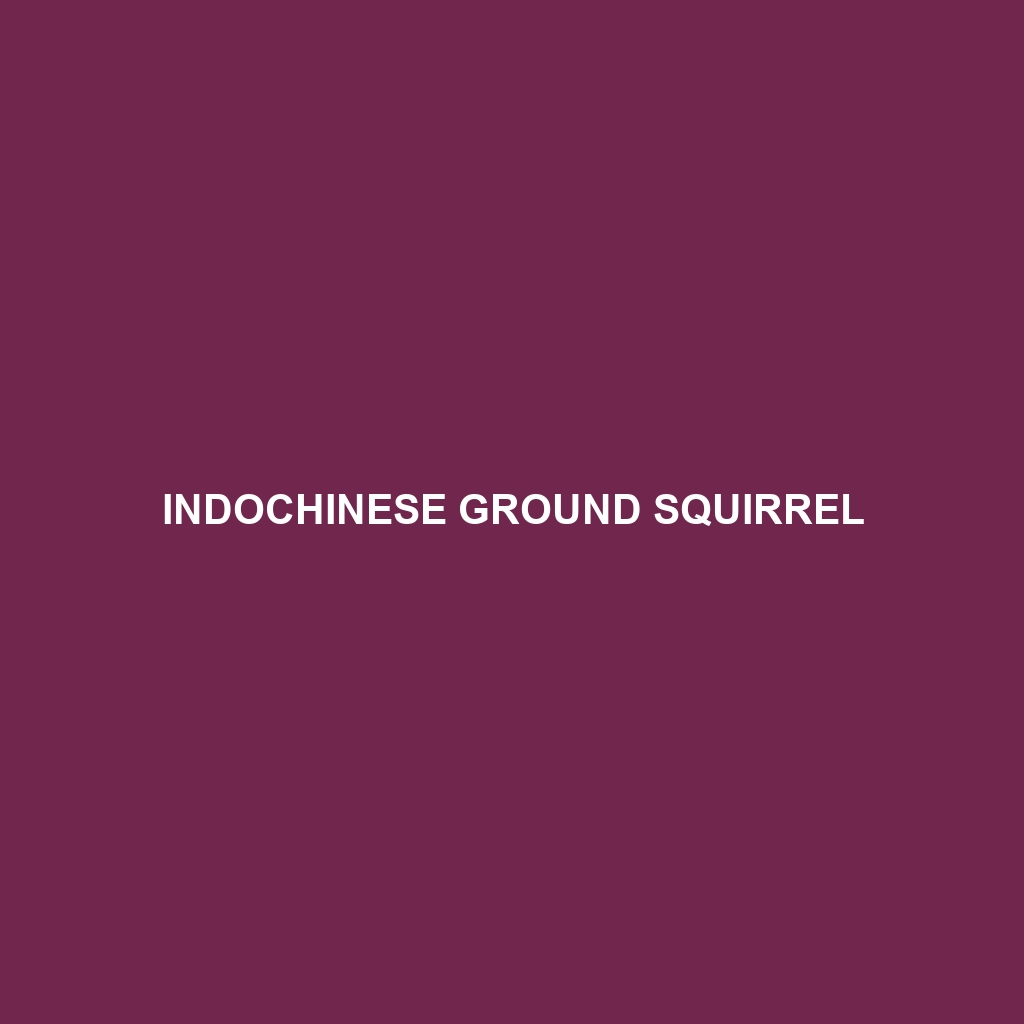Indochinese Ground Squirrel
Common Name: Indochinese Ground Squirrel
Scientific Name:
Habitat
The Indochinese Ground Squirrel primarily inhabits temperate and tropical regions of Southeast Asia, including parts of Thailand, Vietnam, Laos, and Cambodia. These squirrels are often found in grasslands, open forests, and scrublands, where their burrowing behavior allows them to thrive in varied soil types. They prefer areas with abundant vegetation that offers both food and shelter from predators, making them integral to their respective ecosystems.
Physical Characteristics
Indochinese Ground Squirrels are medium-sized rodents, reaching lengths of about 20 to 30 cm (8 to 12 inches), with bushy tails that add an extra 10 to 15 cm (4 to 6 inches). Their fur is generally a mixture of brown and gray, providing excellent camouflage in their natural habitats. Distinctive features include small rounded ears, prominent whiskers, and a slender, elongated body that adapts well to their burrowing lifestyle.
Behavior
These squirrels are diurnal, meaning they are most active during daylight hours. They are known for their social behavior, often seen foraging in groups. Communication among individuals includes a variety of chirps and whistles, which serve to alert others of potential dangers. Their burrowing activities not only provide shelter but also play a vital role in aerating the soil, benefiting the surrounding vegetation.
Diet
The diet of the Indochinese Ground Squirrel mainly consists of seeds, nuts, fruits, and green plant material. They are opportunistic feeders and exhibit foraging behavior that allows them to gather and store food for later consumption. This practice is essential for survival, especially during lean seasons when food is scarce.
Reproduction
Indochinese Ground Squirrels typically breed once a year, with the mating season occurring during the wet season. After a gestation period of approximately 30 days, females give birth to a litter of 4 to 6 offspring. The young are weaned around 6 to 8 weeks of age and begin to explore their surroundings shortly after, learning survival skills from their mother.
Conservation Status
The conservation status of the Indochinese Ground Squirrel is currently listed as “Least Concern” by the IUCN Red List. However, they face threats from habitat loss and degradation due to agricultural expansion and urbanization. Continued monitoring is essential to ensure their populations remain stable in the wild.
Interesting Facts
– The Indochinese Ground Squirrel can dig burrows up to a meter deep, which provide protection against predators and harsh weather conditions.
– They are agile climbers and can often be seen foraging for food in low shrubs and trees, supplementing their diet.
Role in Ecosystem
Indochinese Ground Squirrels play a significant role in their ecosystem as prey for various predators, including birds of prey, snakes, and small mammals. Their foraging and burrowing habits help to improve soil quality by aerating the ground and dispersing seeds, thereby promoting the growth of vegetation and supporting overall biodiversity in their habitats.
